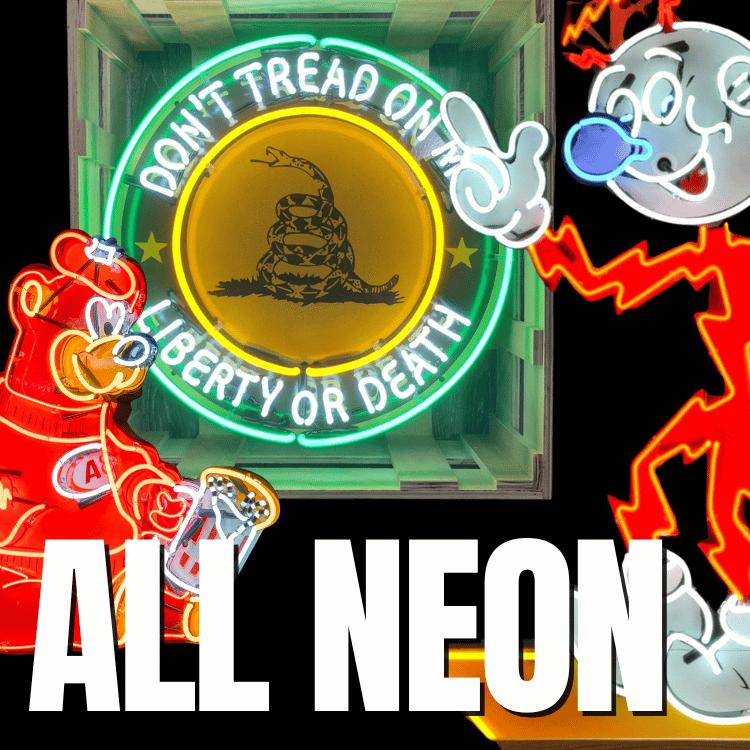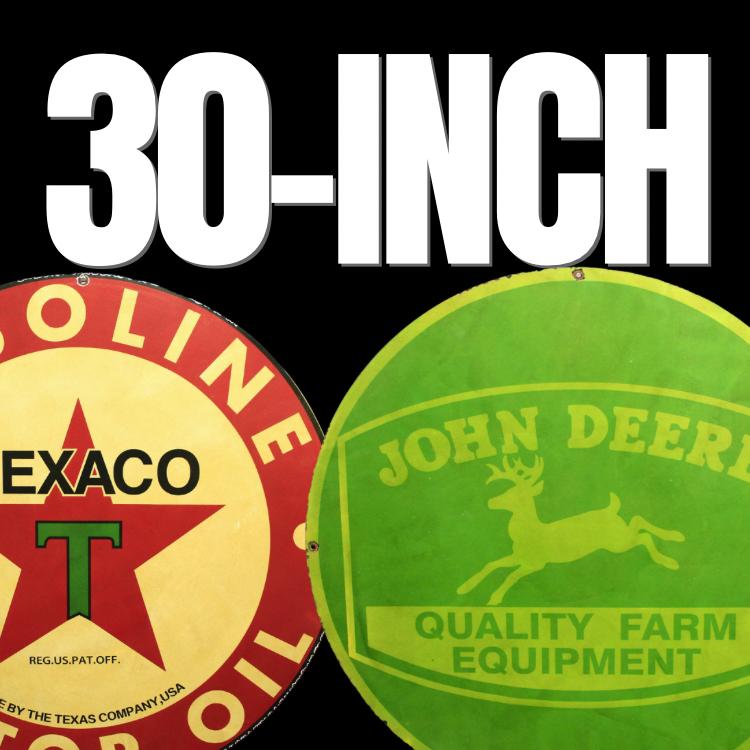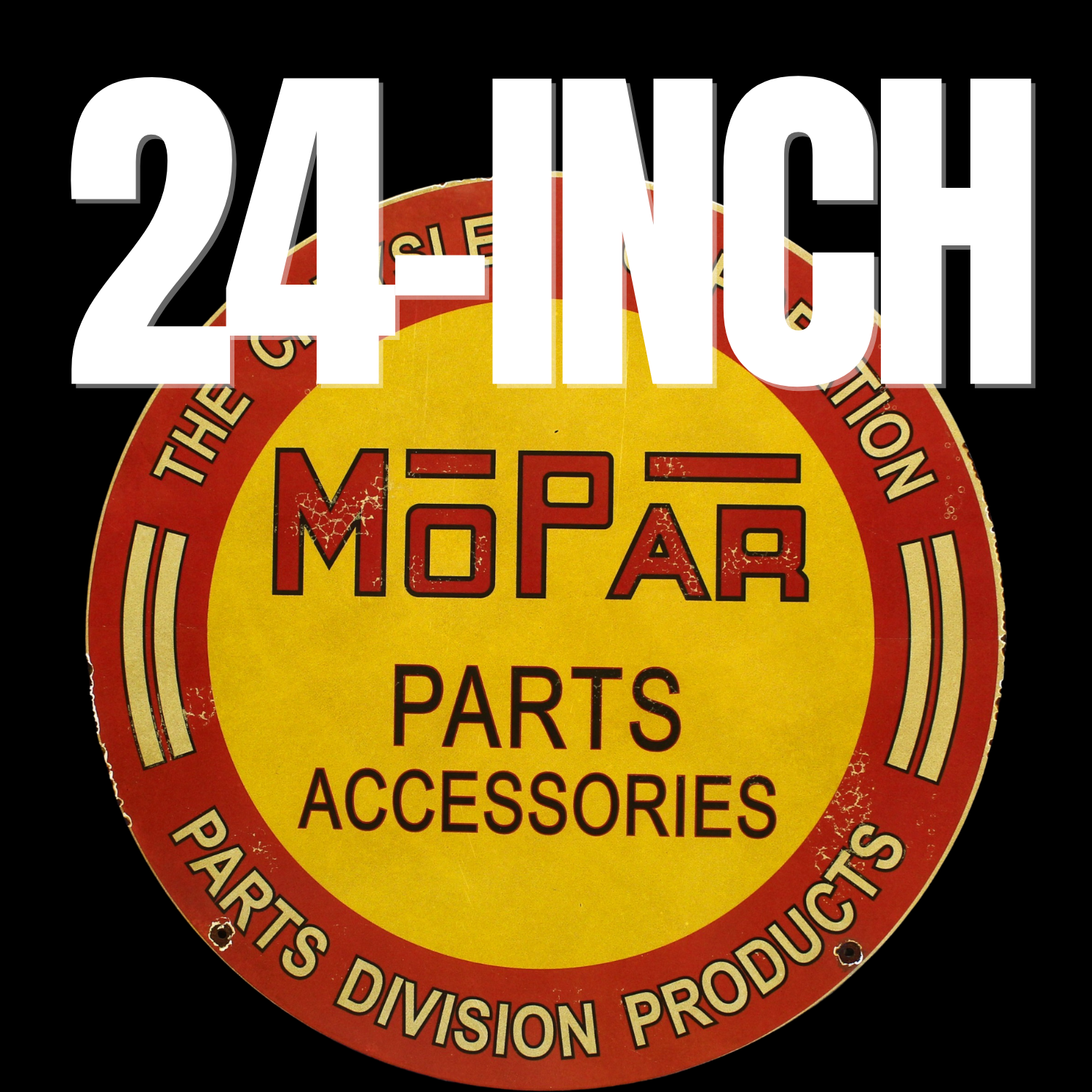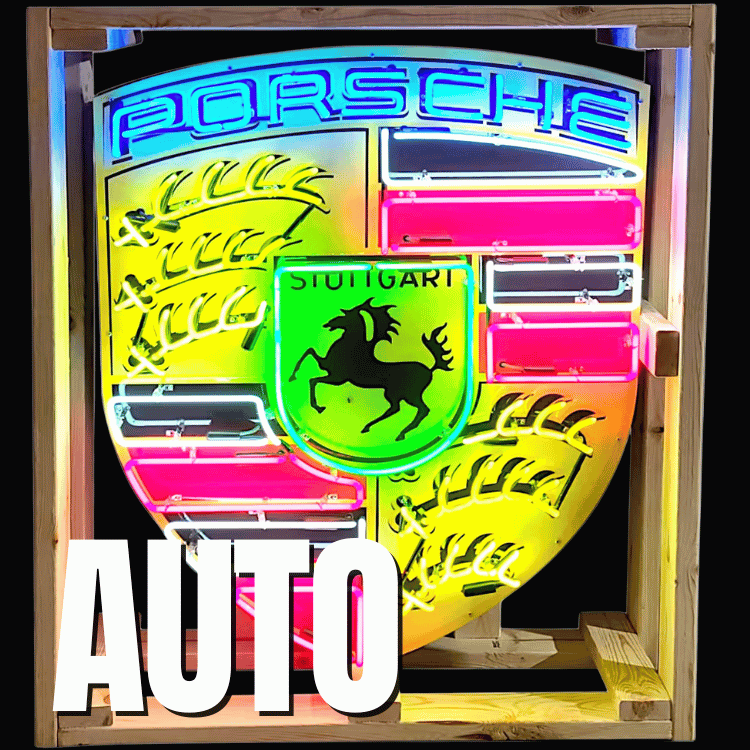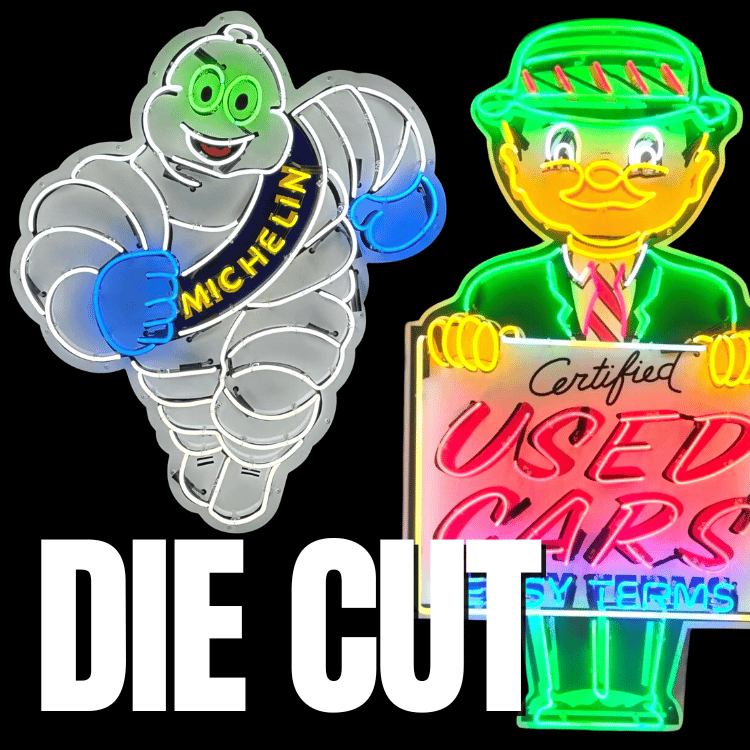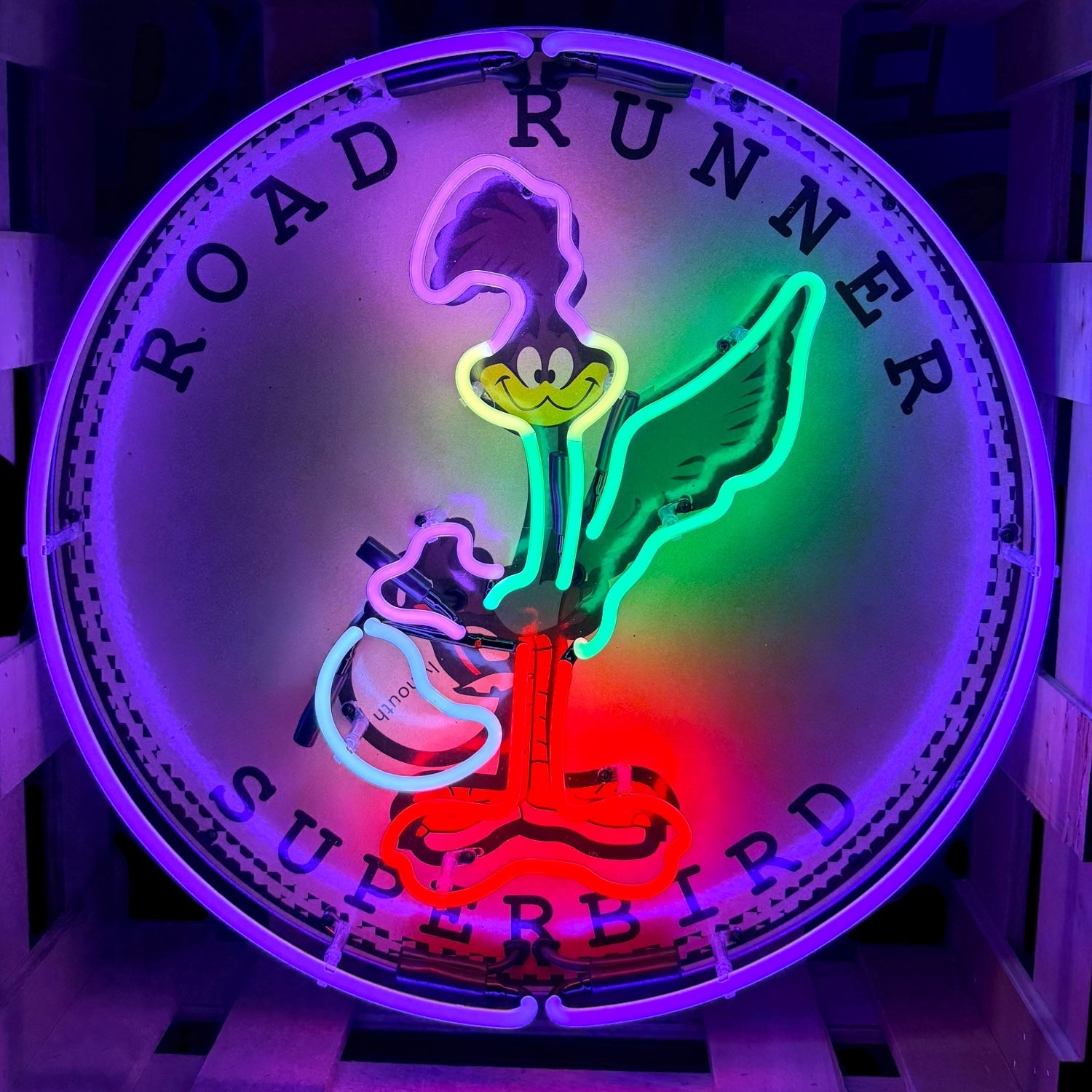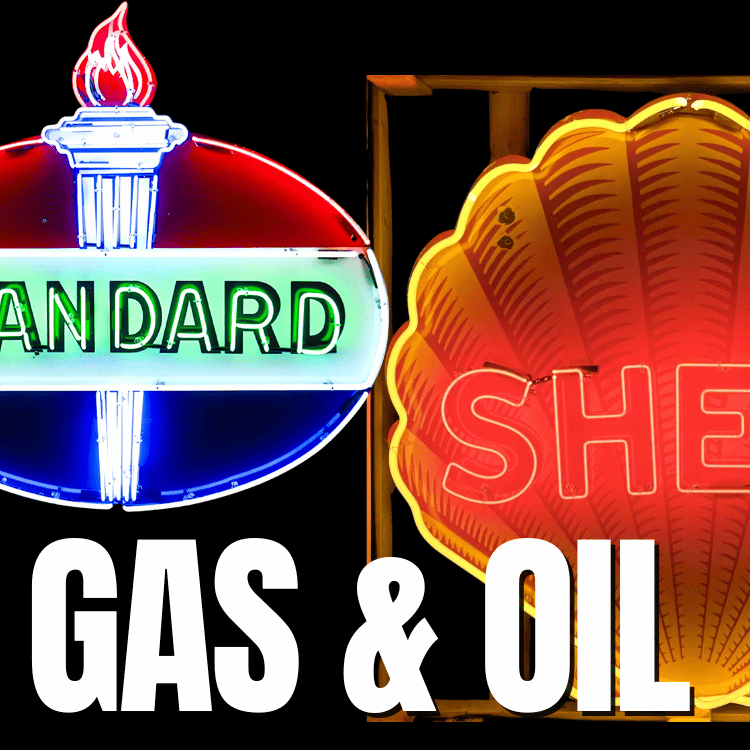
The Process Behind Authentic Neon Signs at Porcelain Advertising
How We Build Real Neon Signs That Are Proven To Last a Lifetime
It all starts with raw American steel. Cold. Heavy. Unforgiving.
The kind of steel you don’t move without gloves and a plan.
We don’t order pre-shaped cans or thin, stamped metal like you see on cheap imports. We take solid sheets of heavy-gauge American steel by identifying the shape and size of each neon sign before proceeding to outline, cut, and grind each thick sheet of 14 gauge steel.
Each can custom made for the sign being produced ensures a perfect fit and better quality housing and protection of the neon's transformers and electrical components
Our focus on quality and attention to detail is why our signs FEEL the way they should.
Every step we take is a process that's likely go unnoticed by 99% of customers but benefits every one that buys a neon sign from us.
That's why we write these posts; we want those interested to know exactly what you're buying and the stratospheric difference in quality of our signs compared to the so-called "competition" and make it crystal-clear the type of sign and commitment to quality you are buying.
Prior to the final assembly of the can; we apply a powder coat finish to the metal which prevents and reduces any rust or corrosion forming. Powder coating is a pain-in-the, time-consuming, and expensive to do but it adds a level of protection the sign's deserve.
Just to give you an idea of what I mean; if we skip that process we save a minimum of 25% on the cost of each sign and 90% of people probably wouldn't notice or mind.
Here's the thing though, once you start cutting corners and sacrificing the end product that's garbage business. But that's also exactly what happened for the last 50 years and might give you an idea of the slippery slope greed, laziness, and pride can lead to.
Everyone races to the bottom in terms of quality and fights to have the lowest prices. It's a cycle, people believe that's the only way to compete but that's naive and pessimistic. We don't and won't.
I believe people want better and have wanted it for a long time. However, it's not easy to sell a product that might look similar in photos for a higher price online. It requires some education and reputation building but everyone should be willing to earn every single customer they have. Then, if you're fair on your pricing, people will choose the fairly priced, higher quality product than the cheaper alternative every time.
That's why it's so important that every step is done the right way. Even when it's the hard way (or expensive way.)
If you want to see how the glass is bent and electrified; check out this short video explaining and showing how glass neon signs are made.
Step 1 – Shaping the Steel
Cutting is just the start. Every edge is ground, every burr is removed, every surface prepped by hand. Skip this, and the sign will never assemble cleanly or hold together over decades.
When it’s time to join the panels, we don’t take the “efficient” route with spot welds. We rivet, the way it was done in the golden age. Slower, more precise, and stronger. Rivets lock steel together in a way that simply won’t quit.
Step 2 – Extra Protection & Rust-Proof with a Little Added Armor
The steel can then gets its armor — a baked-on powder coat. We electrostatically apply the powder so it clings to every surface, then send it into an oven where it fuses into a rock-hard shell. This finish resists corrosion, UV damage, and years of abuse, all while giving the sign a clean, professional base for what’s coming next.
Step 3 – Porcelain Enamel: Glass Fused to Steel
This is where most so-called “neon” makers quit. We don’t.
We take powdered glass, sift it evenly onto the steel, and fire it in a kiln at over 1,400°F until it melts and bonds permanently.
It’s a brutally unforgiving process. The heat shows every flaw. The smallest dust speck or uneven layer means starting over. But when it’s done right, the finish is like nothing else — glossy, deep, weatherproof, and impossible to fake.

Step 4 – Fire, Glass, and Gas
Every tube of neon is bent by hand over an open flame, following a pattern with obsessive precision. Glass doesn’t like to be told what to do. It twists, kinks, and sometimes breaks at the last bend.
We start over until it’s perfect. Then we flush the tubes, fill them with noble gases, and seal them. The glow you see depends on the gas and the glass itself. That first light-up after hours of bending and sealing never gets old.
Step 5 – Bringing It All Together
Once the steel, porcelain, and glass are ready, we assemble everything by hand. Every wire is routed with care. Every mount is secure. And then we do something most shops skip — we give the sign just a touch of soul.
Brand-new porcelain can look almost too perfect. So, we ease the gloss, add subtle character, and make it feel like it’s been around long enough to belong next to a classic car or in an old station — without resorting to fake distressing.
Why We Do It
We could make them faster. We could make them cheaper. But then they wouldn’t be worth making.
Every real neon sign that leaves our shop is built from scratch, by hand, in the USA. Not to be a trend. Not to be disposable. But to stand as proof that the hard way still matters — and that real neon will always outshine the fakes.




